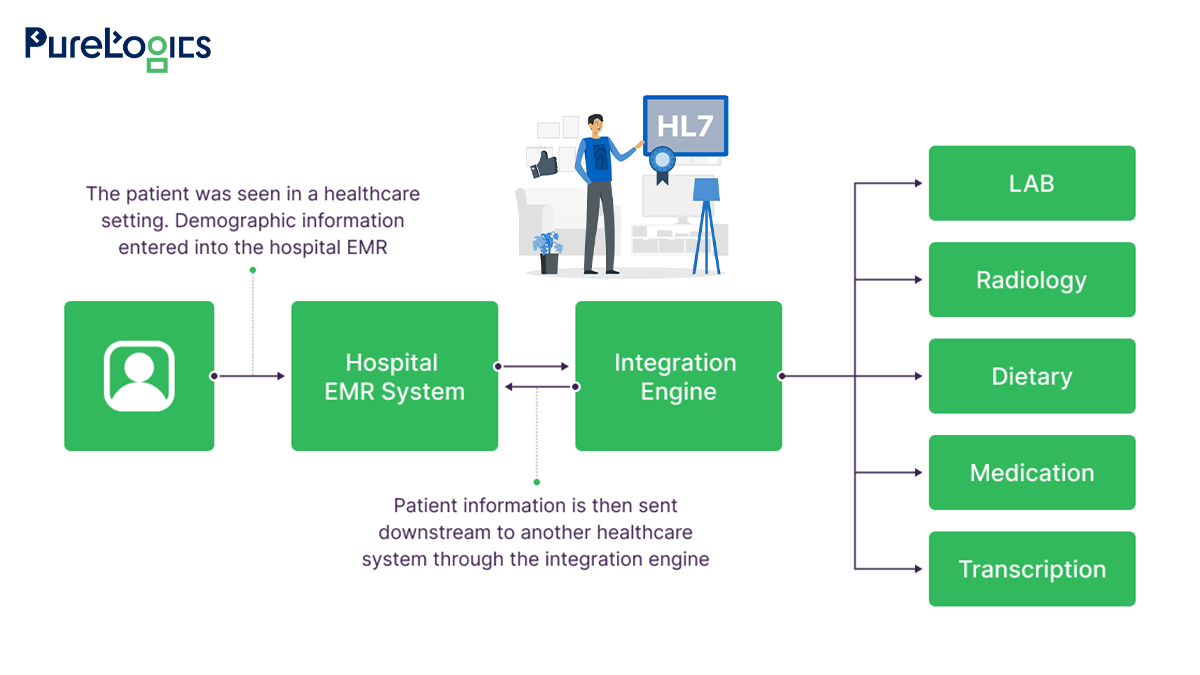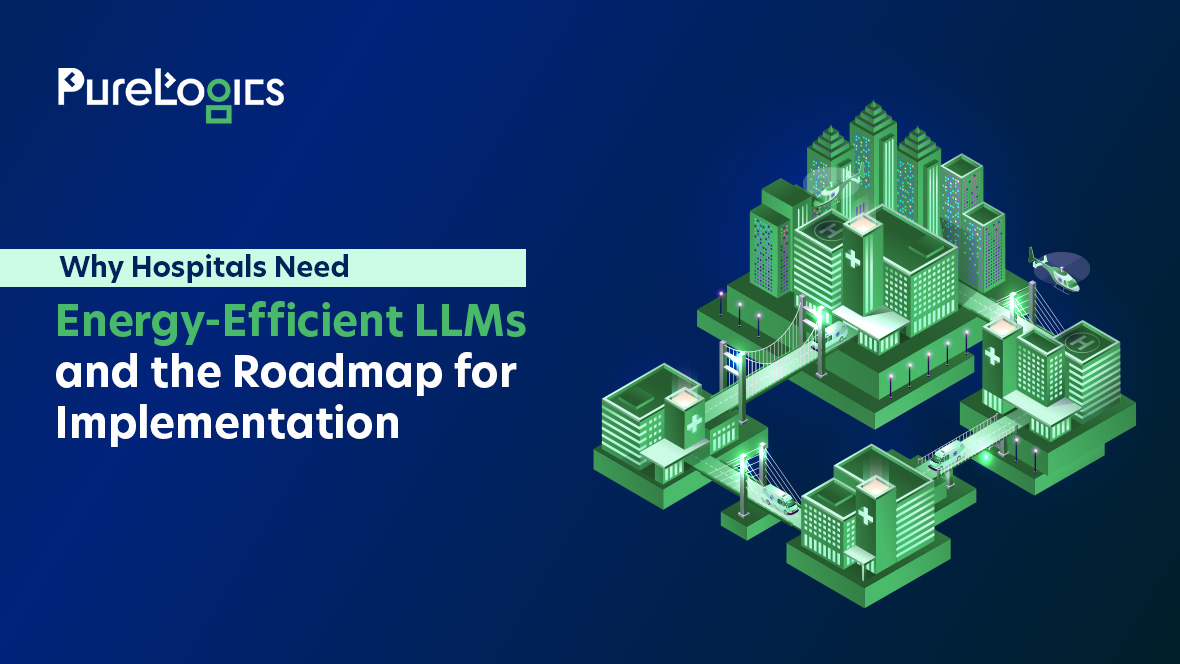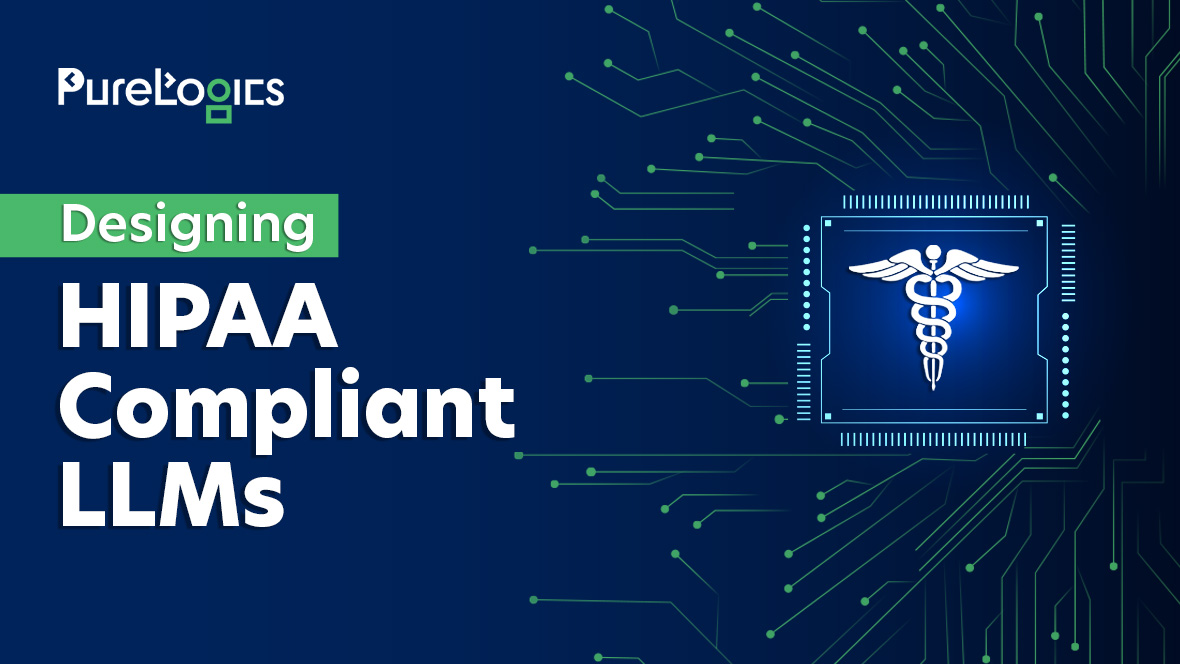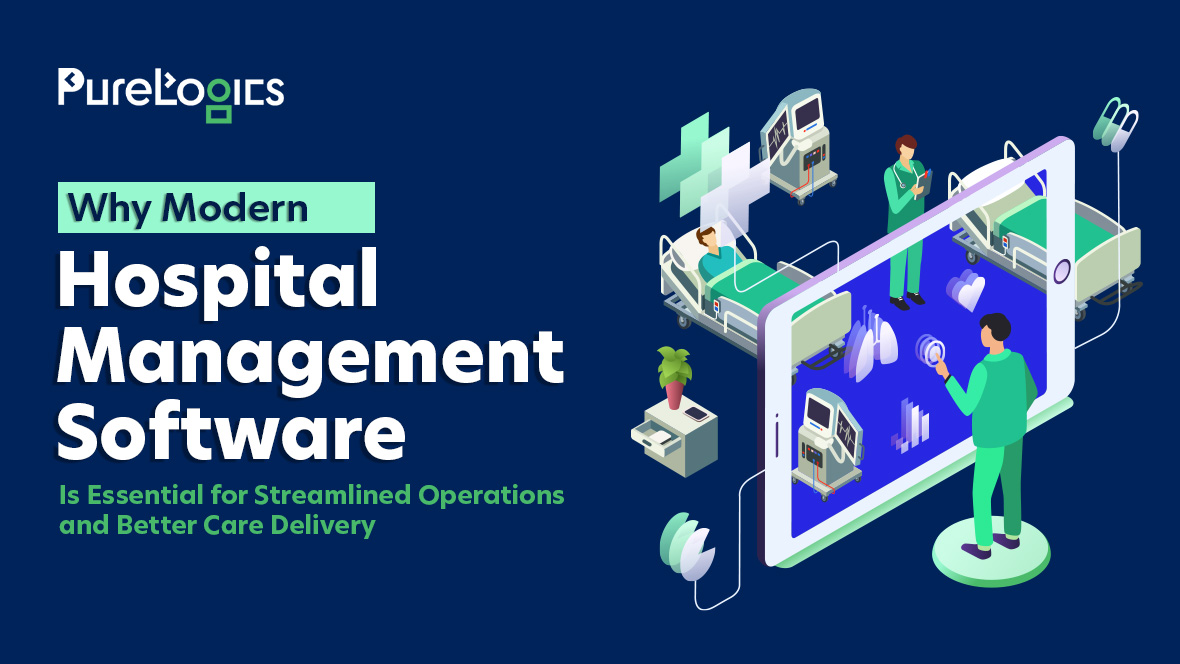If you’re in the Healthcare industry, you’ve surely come across the term ‘HL7 integration.’ You know that healthcare is one of those industries in the world that evolves on a daily basis. Therefore, different standards came into being for the safe and secure exchange of patient data between healthcare providers.
HL7 (or Health Level 7) is one of the updated and highly adopted versions of the international standards for healthcare data integration. It provides guidance to healthcare providers on how to share patient data.
Whether your healthcare organization implements new software or upgrades existing software, HL7 standards and interfaces are highly considered.
In this blog post, you will learn what exactly HL7 is and how we, as HL7 integrator experts in New York City, can assist you in the implementation of this much-needed solution in your healthcare organization.
What is HL7 Integration?
Health Level 7, or HL7, is a set of global messaging standards (also known as protocols or frameworks) that provides guidance to healthcare providers regarding the transfer and sharing of administrative and clinical data. The data can be laboratory results, clinical data, medical images, patient demography, etc.
HL7 International is a non-profit, ANSI-recognized standards-developing organization. This is an entity that develops and maintains HL7 standards.
Now what is HL7 integration?
HL7 integration is a sophisticated process that allows healthcare systems and software to communicate and share patient data among stakeholders. These stakeholders are government organizations, vendors, other SDOs, hospitals, and, above all, patients.
How HL7 Works
Now you know that HL7 is a framework that aims to assist you in the exchange and storage of healthcare data. This framework defines how the information is packaged and exchanged, including the definition of language, and the structure and type of data.

Using HL7 protocols, healthcare organizations can automate their different processes, decrease the number of errors, and increase their overall performance and productivity.
Most Commonly Used HL7 Standards in the Healthcare Industry
Following are the top six HL7 standards that have gained widespread appreciation in the healthcare sector.
HL7 V2 – This messaging standard is widely used for administrative and medical data. For example, patient admissions, billing data, laboratory results, etc.
This standard offers about 80% of the interface structure. It also allows for interface-by-interface negotiation of the remaining 20% of demands.
HL7 V3 – HL7 V2 is the next iteration of HL7 V2. It was introduced in 2005 to address challenges identified in HL7 V2. It is a more comprehensive information model that ensures the precise exchange of data for more accurate decision-making.
HL7 CDA – The CDA standard is an abbreviation of Clinical Document Architecture. It is used to develop and exchange clinical documents in a machine-readable format. The documents include referral letters, lab results, discharge summaries, and many more.
HL7 CDA enhances the smooth exchange of information and ensures data confidentiality and patient care coordination.
EHR – Electronic Health Records, or EHR, is a HL7 standard that comprises multiple profiles and functional models. The goal of the EHR standard is to make sure that electronic health data is properly shared among stakeholders.
HL7 CCDA – Consolidated Clinical Document Architecture (known as CCDA) is another commonly used HL7 standard in the healthcare sector.
It is used to share properly structured clinical documents across multiple HER systems. CCDA ensures compliance with regulatory conditions and, like other HL7s, improves care coordination.
FHIR – Fast Healthcare Interoperability Resources (FHIR) is a new and high-quality HL7 standard that uses modular components and web-based APIs to share administrative and real-time healthcare information.
Why Your Healthcare Business Needs HL7 Integration Today
The healthcare system of the United States of America is highly complicated, and most of its data is stored and handled in separate pools.
For example, every second hospital uses the Hospital Information System (HIS), Laboratory Information System (LIS), Electronic Medical Record (EMR), and Picture Archiving and Communication System (PACS).
All these information systems produce information, but in different formats, which hampers effective communication and collaboration among stakeholders.
But HL7 integration can help you resolve all these issues. Look at the following ways HL7 integration can help your healthcare business:
Integration with telehealth apps is easy
Telehealth has now become a significant trend in the healthcare sector. Now, patients who live in remote areas or who can’t travel to hospitals due to certain reasons can get treatment while sitting at home.
Integration of HL7 with telehealth applications is easy now. Hospitals can quickly integrate medical data into the telehealth apps. It will allow clinicians to fully understand the condition of their patients so that they can provide personalized treatment.
Patients can control their health
A poll conducted in the U.S. says that 87% of patients want access to their medical data. If patients have access to their data, it will help them control their health in a better way. For example, if they forget how to follow the medication process, they will immediately check their prescriptions and understand the medication process.

Once they get access, they can identify mistakes in their healthcare records and inform doctors about them. This all is possible with HL7 integration processes that make the data management process so easy and help patients control their health in a better way.
HL7 ensures quality patient care
Patient care always lies at the heart of every healthcare organization, and HL7 standards and protocols can fulfill this healthcare vision. With HL7 integration, healthcare providers will create, share, and exchange their data without any difficulty or errors.
You already know that data overload has always been a problem in the healthcare industry. Thanks to HL7 integration! It simplifies the data handling processes, helps healthcare experts make better decisions, and provides top-notch patient care.
HL7 decreases healthcare costs
System incompatibility and miscommunication can disrupt the overall flow of services, which will automatically drain your healthcare resources. HL7 is here like a financial cure.
It will decrease healthcare costs, automate the overall process, and make sure that every patient gets the right treatment at a budget-friendly cost.
How HL7 Integration is Used in the Healthcare Industry
Look at these use cases to better understand how HL7 can benefit your healthcare business. Following are some ways to integrate HL7 standards:
EHR implementation
Safe and secure storage and quick data transfer are possible with HL7 integration software. Now, every healthcare professional will have access to the data of their patients without any hassle.
Better process automation
HL7 integration helps your healthcare business decrease manual labor and eradicate processing errors such as laboratory testing, data entry, handling orders, and many more. Moreover, it ensures high-quality, 24/7 patient care and customer service.
Supports remote patient monitoring
Using HL7 integration, healthcare organizations and doctors can easily transfer their patient’s data from mobile phones to EHR systems. This easy integration process supports remote patient monitoring by ensuring personalized healthcare delivery.
Shift management
You can reduce the workload and optimize your healthcare processes using HL7 integration software. Whether it is data viewing, data analysis, or shift management of doctors and medical doctors, HL7 integration does everything.
Looking for Help with Your HL7 Integration?
We are a full-service Technology company with more than 17 years of experience in the healthcare industry. Our best and brightest HL7 integration experts in New York City can help you implement HL7 in your healthcare company.
We build healthcare solutions that offer three benefits: reduction in costs, high practicality, and HL7 compliance.
Contact PureLogics today, where we believe in logic, not magic.


 [tta_listen_btn]
[tta_listen_btn]
 September 12 2023
September 12 2023






